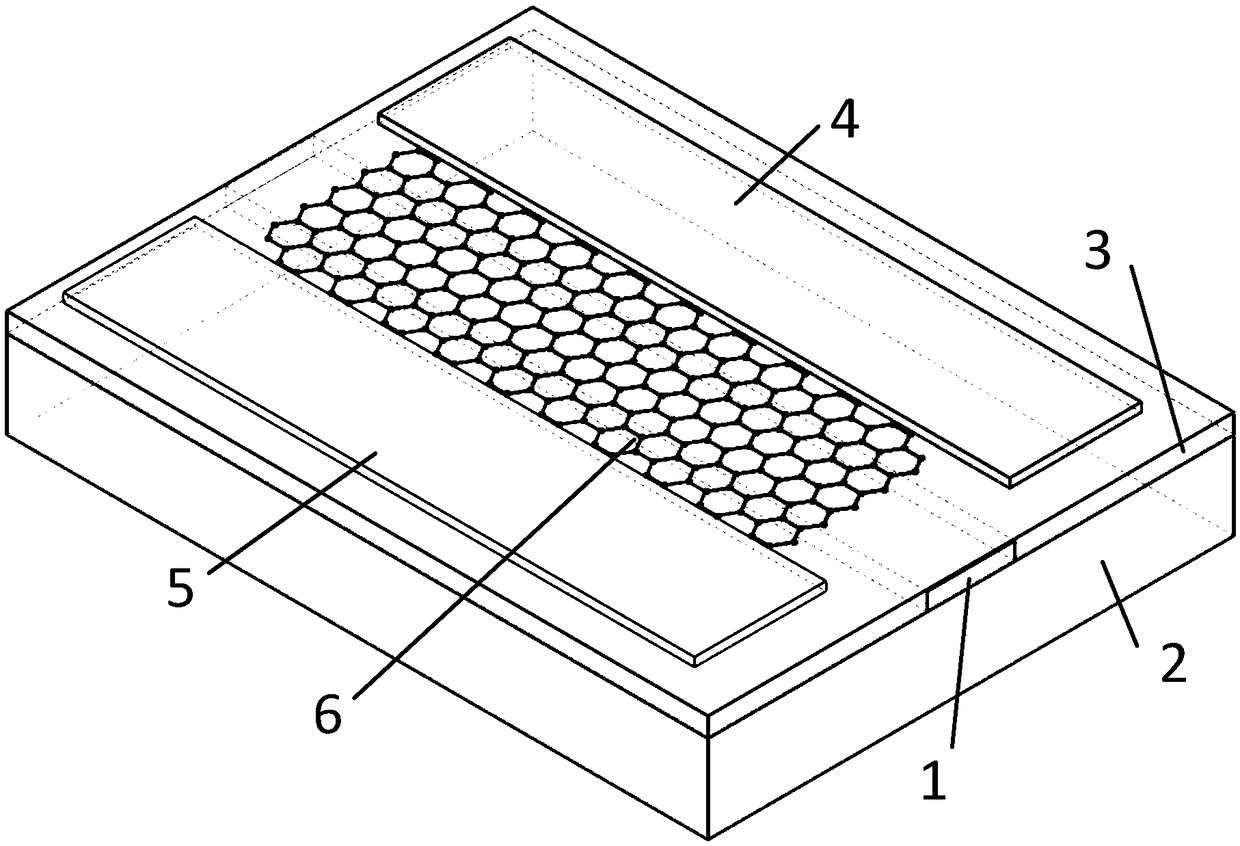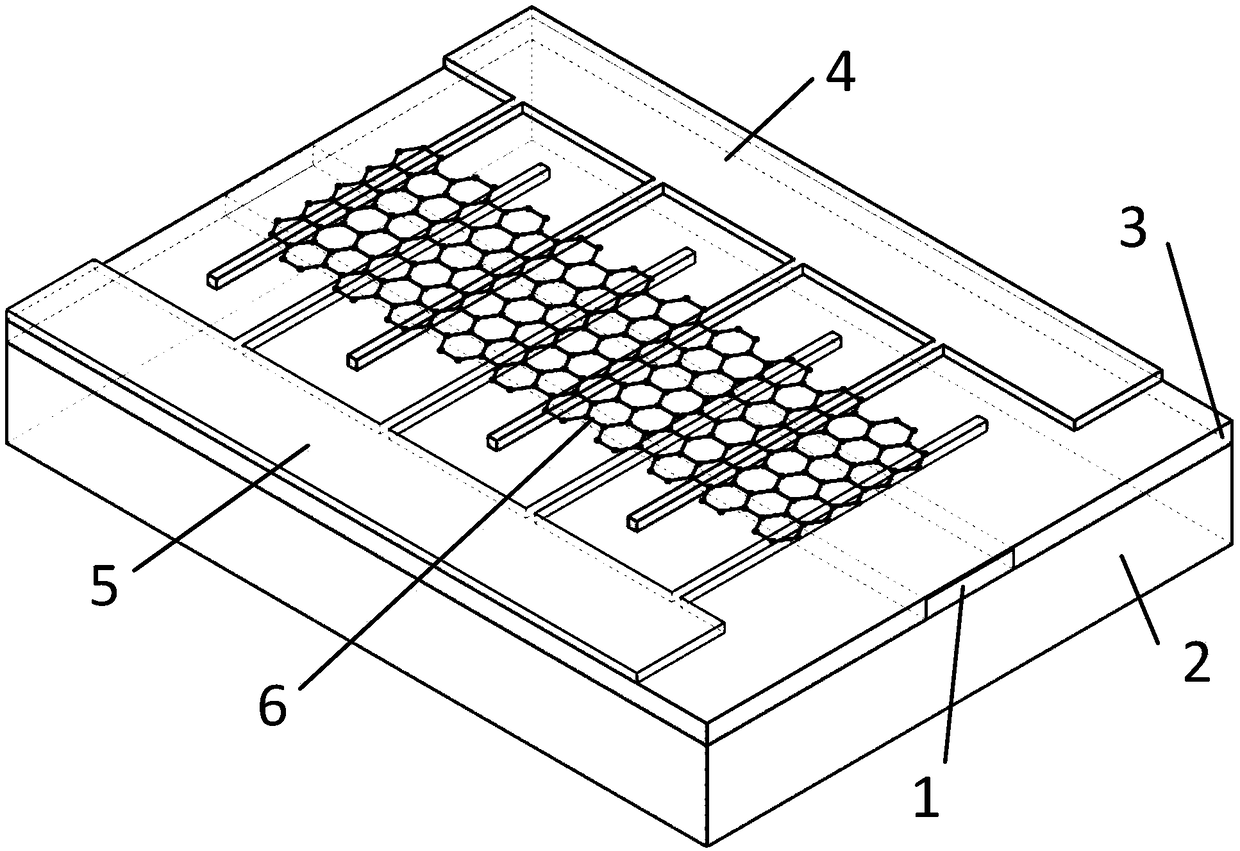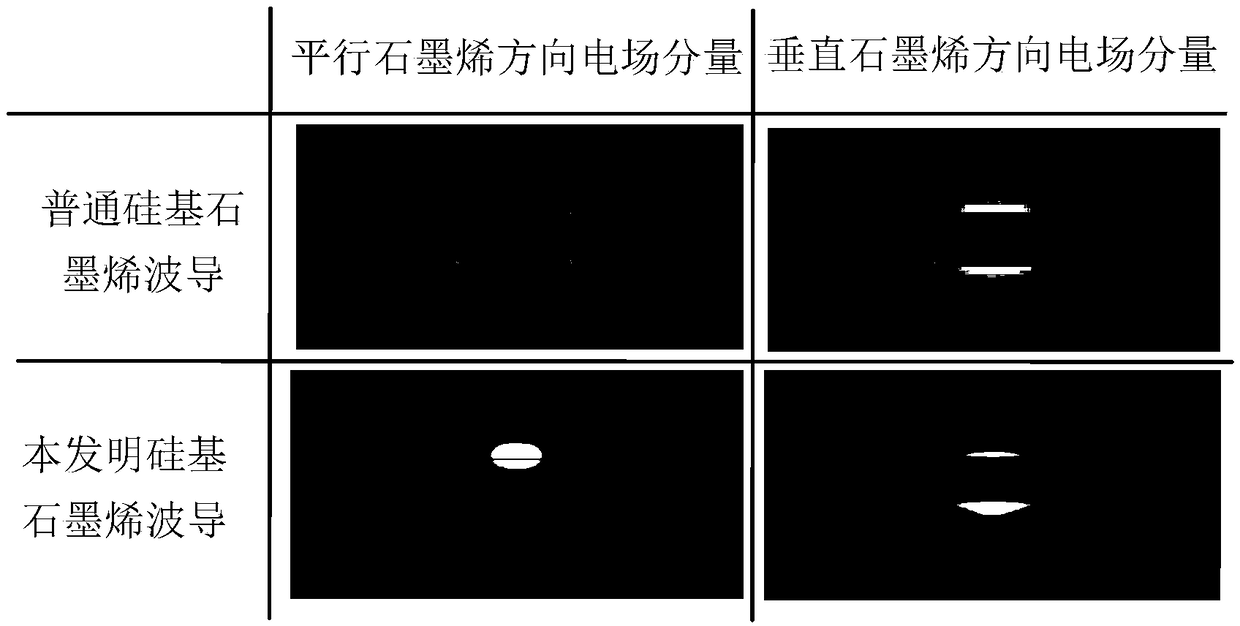Silicon-based graphene photoelectric detector
A photodetector, graphene technology, applied in the optical field, can solve the problems of low detector responsivity, limited detector bandwidth, high extra light, etc., to achieve the effect of realizing broadband response, avoiding resonance effect, and improving responsivity
- Summary
- Abstract
- Description
- Claims
- Application Information
AI Technical Summary
Problems solved by technology
Method used
Image
Examples
Embodiment Construction
[0020] In order to make the object, technical solution and advantages of the present invention clearer, the present invention will be further described in detail below in conjunction with the accompanying drawings and embodiments. It should be understood that the specific embodiments described here are only used to explain the present invention, not to limit the present invention.
[0021] figure 1 It is a schematic structural diagram of a common silicon-based graphene photodetector in the prior art. like figure 1 As shown, a common silicon-based graphene photodetector includes a silicon waveguide 1 , an oxide substrate layer 2 , an oxide cladding layer 3 , a first metal electrode 4 , a second metal electrode 5 and graphene 6 .
[0022] The silicon waveguide 1 acts as a light guide, and it is generally a rectangular silicon waveguide with a width set to 500nm, which can support single-mode transmission of 1550nm light.
[0023] The oxide substrate layer 2 and the oxide clad...
PUM
 Login to View More
Login to View More Abstract
Description
Claims
Application Information
 Login to View More
Login to View More - R&D
- Intellectual Property
- Life Sciences
- Materials
- Tech Scout
- Unparalleled Data Quality
- Higher Quality Content
- 60% Fewer Hallucinations
Browse by: Latest US Patents, China's latest patents, Technical Efficacy Thesaurus, Application Domain, Technology Topic, Popular Technical Reports.
© 2025 PatSnap. All rights reserved.Legal|Privacy policy|Modern Slavery Act Transparency Statement|Sitemap|About US| Contact US: help@patsnap.com



